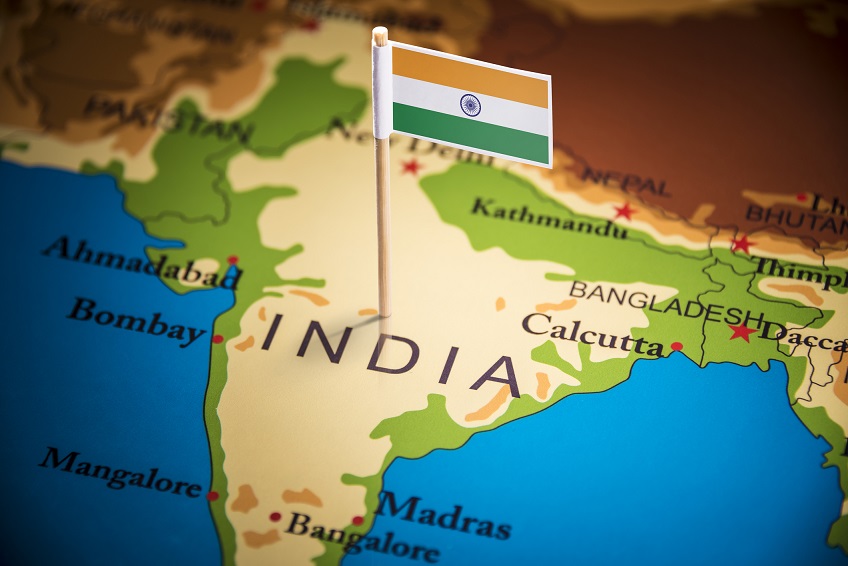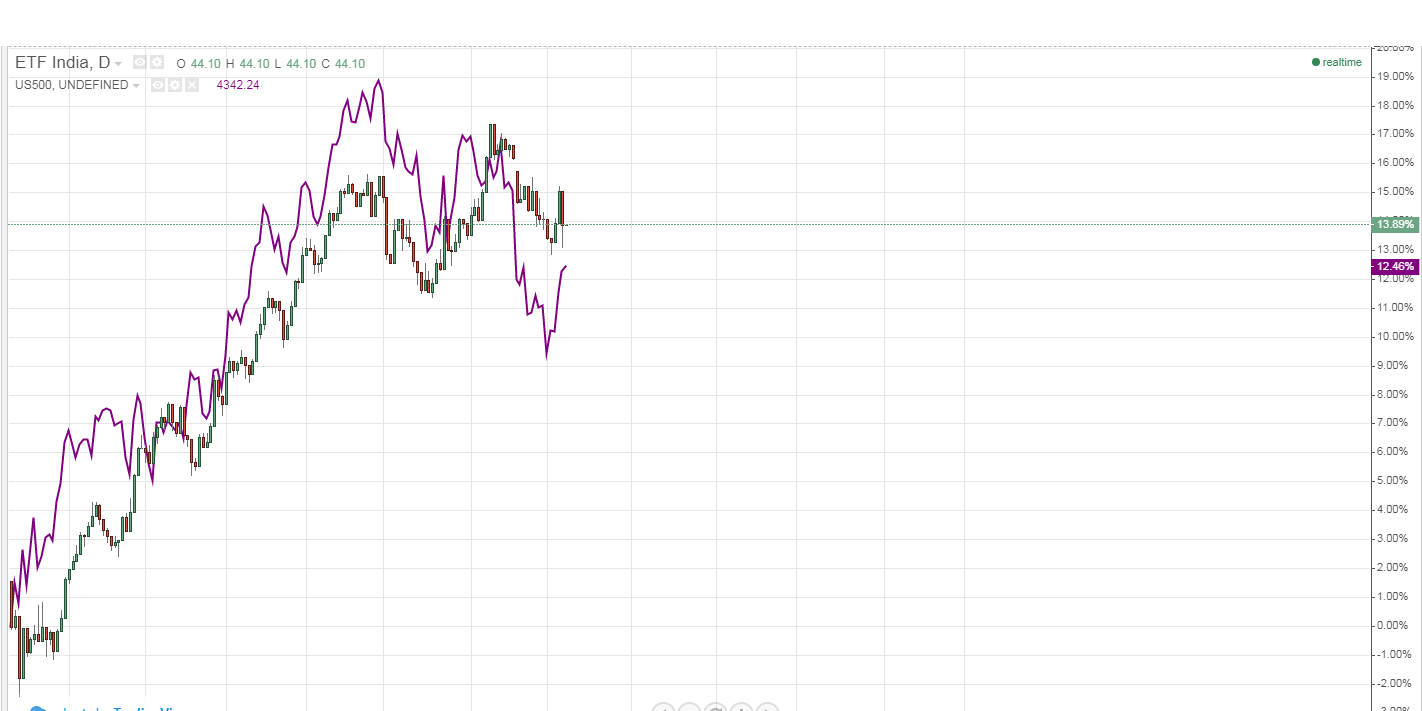
India, after dethroning China as the world’s most populous country, is also one of its fastest-growing major economies. With a young and growing population, a rapidly expanding middle class, and a growing skilled workforce, India is poised for a period of sustained economic growth. This article aims to analyse the strengths, opportunities and weaknesses of the Indian economy as well as provide a way to gain exposure into the Indian market. We’ll start with India’s strengths.
Demographics Advantage
India’s demographics are a major advantage if not the biggest one. The median age in India is just under 29 years, and the country has a large and growing middle class. This young and aspirational population is driving demand for goods and services, fuelling economic growth.
India also has a rapidly expanding skilled workforce. The country is graduating millions of engineers and scientists each year. This skilled workforce is essential for India’s development in key sectors such as manufacturing, IT, and healthcare.
Strengthening Global Ties
India is strengthening its global ties, particularly with the West. This is evident in the country’s growing membership in multilateral organisations such as the Quad (a four-country alliance consisting of Japan, India, the U.S., and Australia) and the BRICS (Brazil, Russia, India, China, and South Africa).
India’s growing global ties are also evident in its increasing trade and investment flows with other countries. In 2022/23, India’s merchandise exports reached $422 billion, an increase of 40% from the previous year. India’s foreign direct investment (FDI) inflows also reached a record high of $83.6 billion in 2022/23.
Infrastructure Growth
India is investing heavily in infrastructure. The government has launched a number of initiatives to improve the country’s roads, railways, airports, and ports. These infrastructure investments are essential for India’s economic growth.
For example, the government’s National Infrastructure Pipeline (NIP) initiative is targeting investments of $1.9 trillion in infrastructure projects over the next five years. The NIP is expected to create millions of jobs and boost India’s economic growth.
Push Toward Manufacturing
India’s manufacturing sector is one of the fastest growing sectors in the world. It is expected to grow at a CAGR of 8.36% between 2023 and 2028 as the Indian government is committed to developing the manufacturing sector. It has set a target of increasing the share of manufacturing in the country’s GDP to 25% by 2025.
The government has taken a lot of initiatives to promote the growth of the manufacturing sector:
- Production Linked Incentive (PLI) scheme to boost domestic manufacturing in key sectors such as electronics, pharmaceuticals, and automobiles.
- National Manufacturing Policy (NMP) 2022, which aims to make India a global manufacturing hub.
- Steps to improve the ease of doing business in India.
Digitalisation
The country has made significant investments in its digital infrastructure and has launched a number of digital initiatives, such as the Unified Payments Interface (UPI) and the Aadhaar biometric identity program.
These digital initiatives have had a major impact on the Indian economy. For example, UPI has made it possible for people to make digital payments easily and securely. Aadhaar has helped to reduce corruption and improve financial inclusion.
Telecommunications and E-Commerce
The country has over 1.1 billion mobile phone subscribers and over 600 million internet users and the numbers are rising.
India’s e-commerce sector is also growing rapidly. In 2022, India’s e-commerce market was valued at $63 billion. The market is expected to grow to $163 billion by 2026.
Pharmacy of the World
India is a global leader in the pharmaceutical industry. The country is the third-largest pharmaceutical producer in the world and exports pharmaceuticals to over 100 countries.
India’s pharmaceutical industry played a key role in the global fight against the COVID-19 pandemic. India is one of the largest producers of vaccines and has exported millions of doses to other countries.
Opportunities:
- A growing export market: India is exporting a growing range of goods and services, including pharmaceuticals, engineering goods, IT services, and agricultural products. This is helping to boost India’s economic growth and create jobs.
- A favourable business environment: The Indian government has taken a number of steps to improve the business environment in the country. These steps include reducing regulations, streamlining bureaucracy, and improving infrastructure. This has made it easier for businesses to operate and grow in India.
- A growing consumer market: India has a large and growing consumer market. This is being driven by the country’s young and growing population, rising incomes, and increasing urbanisation. This growing consumer market is creating opportunities for businesses in a wide range of sectors.
Challenges:
Despite its strong economic growth, India faces a number of challenges. These include:
- Poverty and inequality: India is still a developing country, and a large proportion of the population lives in poverty. There is also a significant level of inequality in India.
- Unemployment: India has a high unemployment rate, particularly among young people. This is a major challenge that the government needs to address.
- Inflation: India has been experiencing high inflation in recent months. This is a major concern for the government, as it can erode the purchasing power of households and businesses.
- Infrastructure deficit: India has a significant infrastructure deficit. This is a major constraint on economic growth.
Despite the challenges it faces, India’s economic outlook is positive. The country has a number of strengths that are poised to drive sustained economic growth in the years to come. India is expected to become the third-largest economy in the world by 2027, surpassing Japan and Germany.
Regarding the performance of the Indian stock market, it aligns closely with the potential of the economy. The primary index of India, representing 85% of companies listed on the Mumbai Stock Exchange, has surpassed the significant gains of the U.S. S&P500 since April.

Source: Delta Trading
To trade this instrument, please add the India ETF to your platform (either Delta Trading or MetaTrader) This ETF is denominated in dollars and is tradable from 15:30 CET to 22:30 CET.
Ivailo Chaushev,
Chief Market Analyst
Risk warning:
This article is for information purposes only. It does not post a buy or sell recommendation for any of the financial instruments herein analysed.
Deltastock AD assumes no responsibility for errors, inaccuracies or omissions in these materials, nor shall it be liable for damages arising out of any person’s reliance upon the information on this page.
56% of retail investor accounts lose money when trading CFDs with this provider